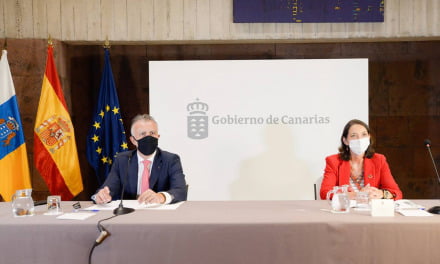The European Commission this Monday has asked the EU27 to take further measures to “strongly discourage” travel both within member states and between them, as well as to and from outside “third countries”, to try to contain the new variants of coronavirus found in the UK, South Africa and Brazil, calling for a new category to be created, coloured “dark red”, to identify areas of greatest risk that show more than 500 new infections per 100,000 population over a 14 day sample.
 “The first recommendation is not to travel,” said the Interior Commissioner, Swedish socialist Ylva Johansson, at the press conference in Brussels to present details of the proposal that, in general terms, had already been put forward by the president of the European Commission, Ursula von der Leyen (pictured), last Thursday after the meeting with EU Heads of State and Government.
“The first recommendation is not to travel,” said the Interior Commissioner, Swedish socialist Ylva Johansson, at the press conference in Brussels to present details of the proposal that, in general terms, had already been put forward by the president of the European Commission, Ursula von der Leyen (pictured), last Thursday after the meeting with EU Heads of State and Government.
With the help of a mockup graphic, shown in the same appearance by the Commissioner for Justice, Didier Reynders, should a fourth colour be incorporated into the risk classifications from the European Center for Disease Control and Prevention (ECDC), there would already be a dozen countries that would have some part of their territory tinted dark red, including the entirety of Spain based on its current 14-day Average Incidence of 804/100k population.
Despite Spain’s average data per population, were the ECDC recommendations more detailed on a regional level The Canary Islands archipelago could in theory be excluded as a whole ( standing at an average 189.1/100k), although Lanzarote could not be left out of the Spanish figure (currently just short of 800/100k).
For the latest Canary Islands COVID-19 data, updated daily, visit our page for mobile here, or for more feature rich content on desktop devices you can check here.
 Brussels, does not control competences in health matters for the EU nor border management, but this Monday began negotiations at a technical level with the member states to achieve “as soon as possible” a consensus that the EU27 can commit to and follow, although national authorities continue to have the last word when choosing to apply the recommendations, or not.
Brussels, does not control competences in health matters for the EU nor border management, but this Monday began negotiations at a technical level with the member states to achieve “as soon as possible” a consensus that the EU27 can commit to and follow, although national authorities continue to have the last word when choosing to apply the recommendations, or not.
The EU believes that unnecessary journeys “should not occur at all” to or from regions that exceed a threshold of 500 infections per 100,000 over fourteen days, according to the commissioner, and recommends that people who do travel on trips considered “essential” should be subjected to a PCR test before departure, and adhere to a strict fourteen-day quarantine upon arrival at their destination.
The recommendations of the European Commission follow one published last week by the European Centre for Disease Control and Prevention (ECDC), which urged the countries of the European Union to strengthen measures to discourage all “non-essential” travel.
However, the Commission insists that it believes the closure of borders within the European Union is not an effective solution against the virus, but rather that an approach that adapts restrictive measures to the epidemiological situation of each region, regardless of where borders are present, and so they called for the free movement of essential and cross-border goods and workers to be maintained smoothly.
Following the recommendations of the ECDC, Brussels asks member states to “maintain or reinforce” severe measures such as the principle of staying at home and the temporary closure of businesses in places where the risk of infection can be considered to be very high, although the also stressed that it is essential for tracing and testing to improve pandemic control and the sequencing of new cases.
The Commission also took advantage of this recommendation announcement to insist on the need for a common passenger form, an initiative that Brussels hoped would be underway throughout the EU at the end of last year but is still under development due to legal complications involved in requiring travellers to provide certain types of personal data that could later be shared with the rest of the member states.










